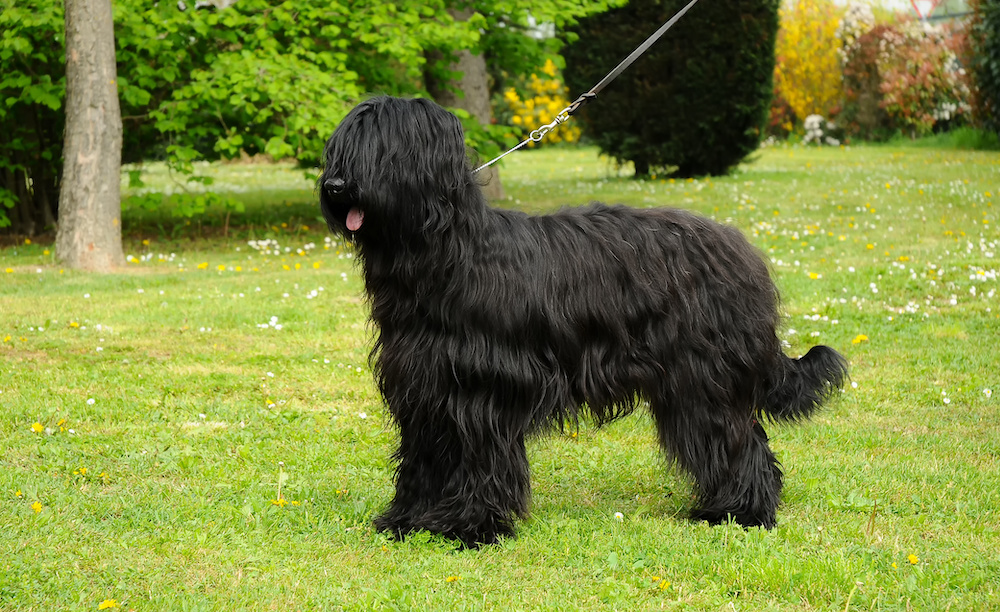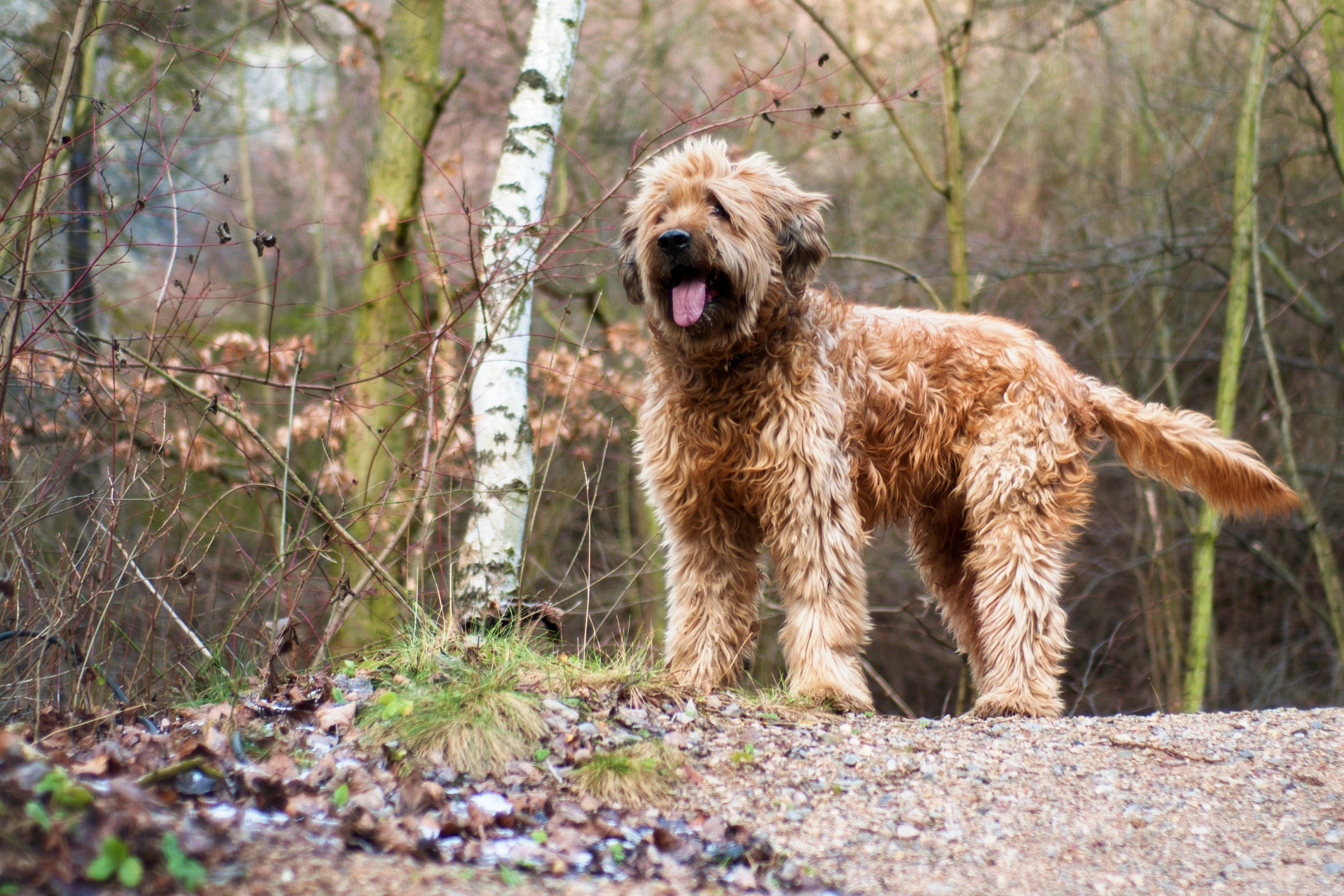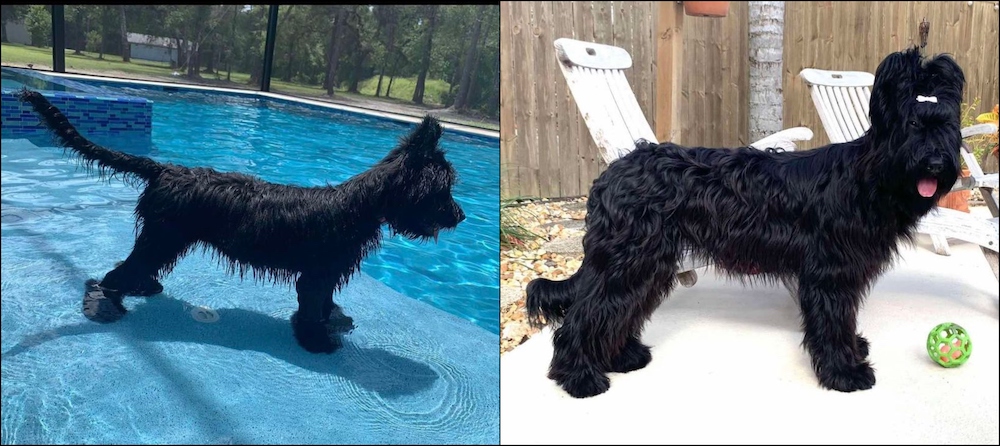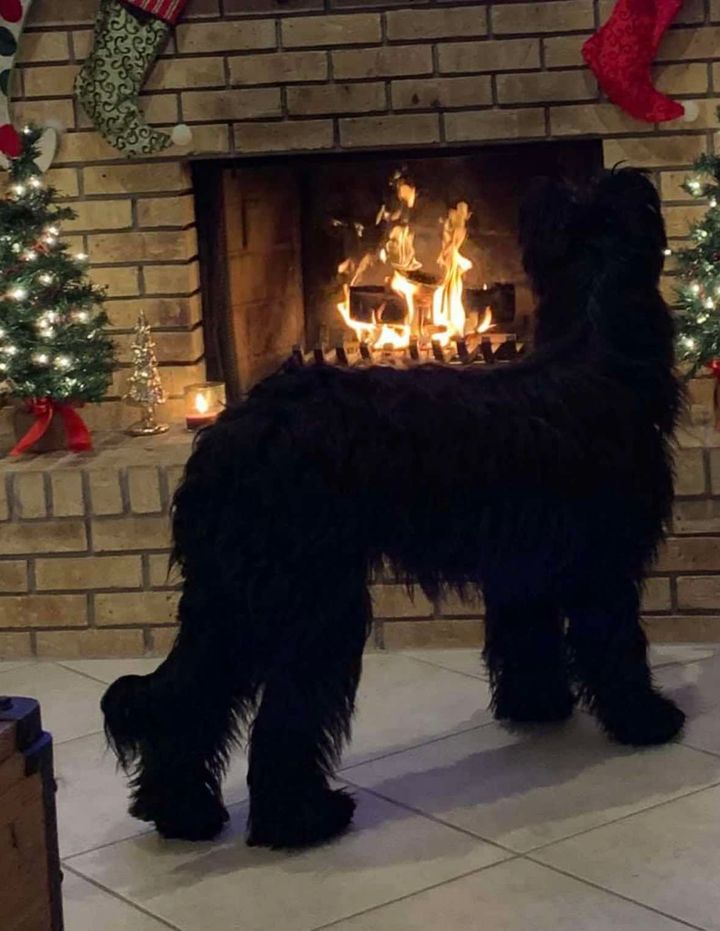
It was an effort to limit ourselves to a short paragraph as to why it might be unfair to use the photo below to point out a fault, but a funny thing happened on the way here…..

Briard by ©Hana Bartosova/Dreamstime
In truth, the Briard in the photo may not have a fault at all.
And what was intended to be a one-topic post became two after we consulted a few savvy Briard owners for their opinions on the dog in the picture. To a person, they were in agreement by virtue of the one same question each of them asked: What was the dog doing when the photo was taken?
Our post was originally to be about the classic Briard tail. The AKC breed standard is clear: The tail is uncut, well feathered, form[s] a crook at the extremity, is carried low, and not deviating to the right or to the left. At rest, the tail terminates in a crook, similar in shape to the printed “J” when viewed from the dog’s right side, and in action, the tail is “raised in a harmonious curve, never going above the level of the back, except for the terminal crook.”
Some refer to this “J-curve” tail as a “crochet tail” for obvious reasons:

Photo by form PxHere
In our view, the profile of a Briard would be less “Briardy” were it not for J-curve” at the tail tip. In fact, as one of our Briard consultants repeated to us: “No hook, no Briard.”
A Briard tail without the classic crochet hook has been called a “sabre” or knitting needle tail, and to the credit of Briard breeders, it was all but impossible to find a photo of a Briard with a faulty tail.
And then we found the photo you saw above.
Still, we were suspicious that perhaps this was a very young Briard, and the J-hook comes later? When in doubt, ask the experts – long time breed owners – and again, each one asked what was the doing when the photo was taken. We learned that if the dog had just stopped moving and the tail hadn’t yet relaxed, it might look as you see it. We learned that if the tail had been in motion and the camera caught the tail in-between wags, it could look as you see it. To help us make the point, our thanks to Molly who shared the two pictures below.
Meet Olive. At the left, she is 12 weeks old, the camera catching her between silly moments. As you can see in the photo the right where Olive is 7 months old, she had a lovely crochet hook tail:

A tail without a hook taken in the nanosecond of a camera lens snapping shut doesn’t necessarily mean it never has the crochet hook
Even when twitterpated with excitement in waiting for Santa (photo below), Olive’s hook tail “kept the faith:”

In the photo below, Clover shows how the tail keeps its hook even on the move:

Not even a wet coat ‘wrings” out that tail:

Photos of Clover appears courtesy of Molly Gardner
The moral of the story, figuratively speaking, isn’t just to share information about this important aspect of Briard type, but to “show and tell” how a photograph can fool you.
Our thanks to Molly, Elizabeth, Jen, Tracy, and Pauline for helping us out!
Image at the top: Briard by Ricant Images/Adobe
